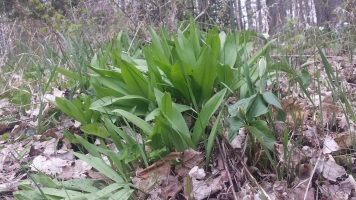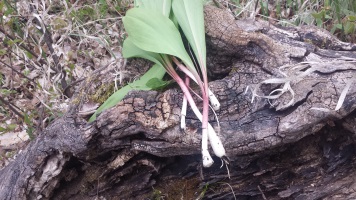Planning forest enterprise activities can generate year round income from your forested woodlots
Incorporating a variety of income producing forest enterprise components to a landowner’s forest management plan can help provide not only a more sustainable annual income but also offer income opportunities throughout a given calendar year.
Although expenses like property taxes and insurance premiums are annual liabilities many forestland owners need account for, in many cases income from the property is sporadic coming in gaps of several years. With timber sales on any given stand most often established on a 10 or 15 year schedule, meeting annual expense need can be a challenge.
Forestland or woodlot owners are encouraged to look into and consider various forest enterprise activities to supplement income on a more regular basis. Acreage, topography, soil types and personal use plans need to be assessed when considering options as activities may be restricted on a situational basis.
There is no option to tap maple trees if ownership is all jack pine for example. Forest landowners focused on shooting a big buck may not be interested in leasing hunting rights. You can’t harvest conifer boughs from hardwood stands. The preceding examples are just a short list of activities restricted by landowner preferences or the forest resource itself. Before endeavoring to engage in enterprise activities landowners are encouraged to research their options based on their personal objectives, local market interest and site variations.
With the understanding there are limits to options; many opportunities are available to generate income from your forested lands on a regular basis that can be broken down seasonally. An example of a year around list might include some of the following activities.
Fall:
Firewood – dead wood can be cut and marketed for the upcoming winter heating season
Boughs – this is the season to harvest fir and cedar boughs for wreaths and blankets
Hunting – camps can be rented out or hunting rights leased to interested parties
Ginseng – fall is harvest season for cultivated forest ginseng as well as a good planting time
Vines – those nuisance grape vines can be used for decorative wreaths and baskets
Winter:
Timber harvest – this can be year abound but many stands are most easily harvested in winter
Firewood – live trees are too wet (green) for now but next year’s wood can be cut and stacked
Silent sports – there is growing interest in areas for snowshoeing & cross country skiing
Syrup – late winter tapping in stands with enough maple in them
Spring:
Wildlife plants- good time of year to establish new plants to enhance wildlife habitat
Mushroom - either get started on growing cultivated varieties or harvest wild grown
Ramps- (aka leeks or wild onion) there are expanding markets for this forest grown root crop

Growing ramps | Photo by: Mike Schira

Harvested ramps | Photo by: Mike Schira
Summer:
Eco tourism – there is growing interest in areas for non-consumptive uses like birding & photography
Cabin Rental- consider renting out that deer camp for summer use
Timber harvest – upland sites can be harvested this time of year
Honey – wildflowers and flowering tree species can provide pollen for bees
Tree nuts – cultivation and harvest of forest tree nuts for sale
Some activities may require permitting, training or be restricted by local ordinances. Supplemental wildlife feeding is regulated by the Michigan DNR. Wild-foraged mushroom harvesting for resale requires certification recognized by the Michigan Department of Agriculture and Rural Development (MDARD). Some local counties and townships may have rental restrictions or require permitting for harvest activities. As landowners begin the process of planning they are encouraged to check to ensure they are in compliance of these rules and regulations.
To help with the planning process for forest enterprises Michigan State University Extension forestry team offers some information and useful web links on their Natural Resource Enterprises site. Another good resource for ideas is Mississippi State University’s Natural Resource Enterprises page; although adjustments need to be considered for geographic differences they provide some unique and interesting ideas in through their program.



 Print
Print Email
Email


